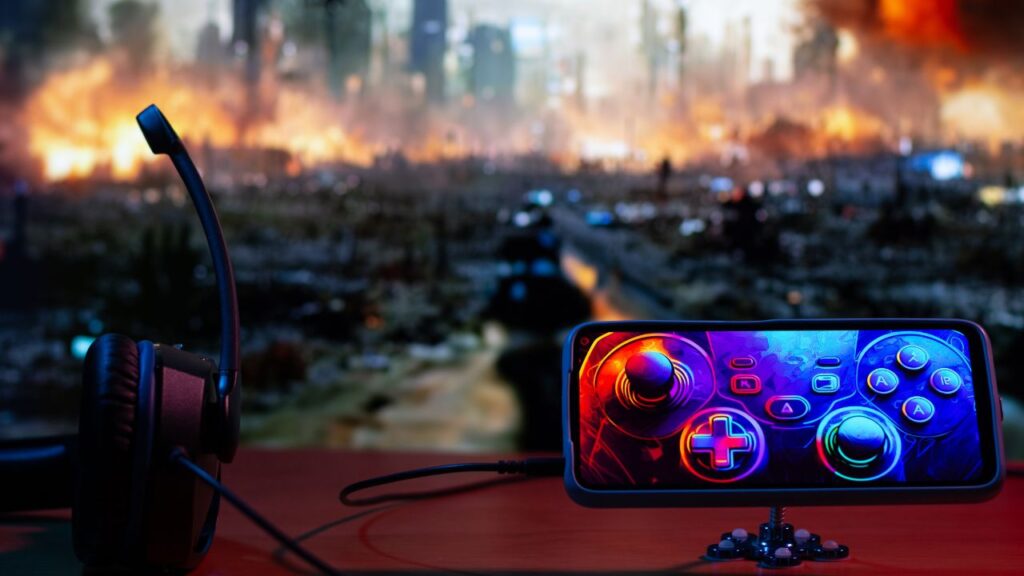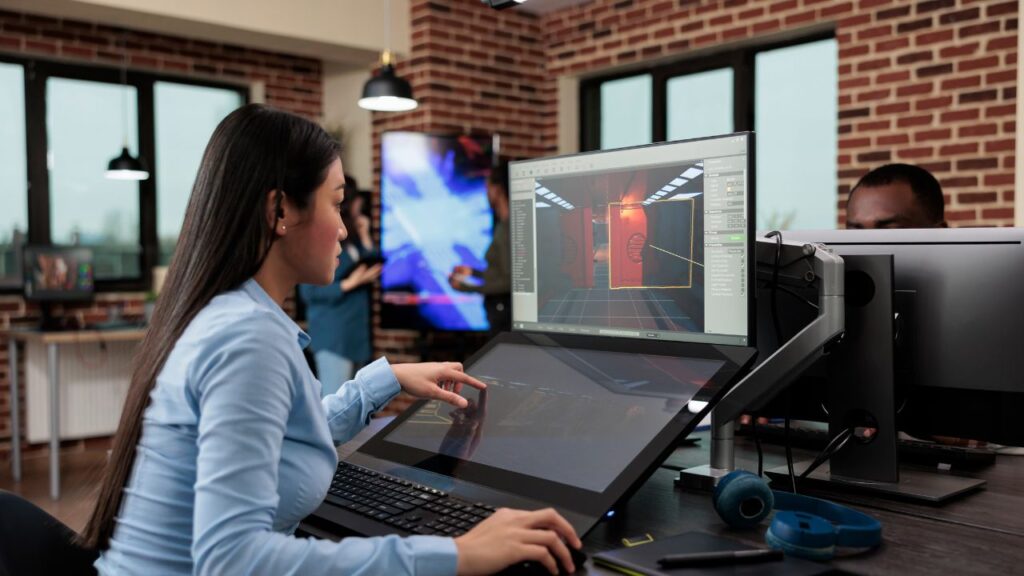Game trailers are the main way players discover new games and decide if they want to play them. A good trailer can make the difference between a game that gets noticed and one that gets lost in the crowd. Many game developers struggle with creating trailers that grab attention and show off their game’s best features.
Making a game trailer involves planning what to show, capturing the best gameplay moments, and editing them into an exciting video that tells your game’s story. The process requires you to think about your target audience and what would make them want to play your game. You need to balance showing actual gameplay with creating excitement and mystery.
This guide will walk you through the core steps to create engaging game trailers that connect with players. You’ll learn how to plan your trailer content, capture the right footage, and polish everything into a final product that gets people excited about your game. Whether you’re an indie developer or part of a larger studio, these techniques will help you create trailers that stand out.
What Are the Core Steps to Make an Engaging Game Trailer?
Creating an engaging game trailer requires four key elements: identifying what makes your game special, building a story that hooks viewers, filming gameplay that shows your best features, and choosing audio that amplifies the excitement.
What Makes Your Game Different From Others?
Every game has something that sets it apart. This could be unique gameplay mechanics, stunning visuals, or an interesting story. Finding these selling points is the first step to making a good trailer.
Start by listing what players will love most about your game. Is it the combat system? The beautiful world? The funny characters? Write down at least three things that make your game special.
Look at similar games in your genre. What do they focus on in their trailers? Your game should highlight different features to stand out from the crowd.
Test your selling points with real players. Show early footage to friends or online communities. Watch which parts get people excited. These reactions tell you what to focus on in your trailer.
Keep your selling points simple and clear. Players should understand what makes your game special within the first few seconds of watching.
How Do You Build a Story That Hooks Viewers?
A good game trailer tells a story in 60 to 90 seconds. The story should create excitement and make people want to play your game.
Start with a strong opening scene. This could be an action moment, a beautiful landscape, or an intriguing character. The first 5 seconds decide if people keep watching.
Build tension throughout the trailer. Show a problem or challenge that players will face. Then reveal how your game lets them solve it. This creates emotional investment.
Use the three-act structure:
- Setup – Show the game world and main character
- Conflict – Present challenges or enemies
- Resolution – Display the tools and abilities players get
End with your strongest gameplay moment. This should be the most exciting or impressive scene from your game. It leaves viewers wanting more.
What’s the Best Way to Film Your Gameplay?
Great gameplay footage shows your game at its best. Focus on moments when your game looks and feels most exciting.
Record gameplay at the highest quality possible. Use 1080p or 4K resolution with smooth frame rates. Poor video quality makes even great games look bad.
Capture different types of scenes:
- Action sequences with lots of movement
- Beautiful environments that show off your art
- Character interactions that reveal personality
- Special abilities or weapons in action
Avoid these common mistakes:
- Long menu screens or loading times
- Repetitive actions that look boring
- Glitches or bugs that aren’t fixed yet
- Scenes that don’t show core gameplay
Plan your shots like a movie director. Use close-ups for important details and wide shots for epic moments. Mix different camera angles to keep things interesting.
How Do You Pick Audio That Amplifies the Excitement?
Music and sound effects can make or break your trailer. The right audio makes exciting moments feel more intense and emotional scenes more powerful.
Choose music that matches your game’s mood. Action games need fast, energetic tracks. Puzzle games work better with calm, thoughtful music. Horror games require creepy, unsettling sounds.
Layer your audio effectively:
- Background music sets the overall tone
- Sound effects from gameplay add realism
- Voice acting or narration explains key points
- Silence creates dramatic pauses
Make sure audio levels are balanced. Music shouldn’t overpower important dialogue or sound effects. Players need to hear what’s happening in the game.
Consider hiring a professional composer or sound designer. Good audio is worth the investment because it makes your trailer feel more polished and professional.
Test your audio with headphones and speakers. Different playback devices can make audio sound very different. Your trailer should sound good on both.
How Can You Finalize, Polish, and Promote Your Game Trailer?
The final stage of trailer creation involves refining your edit for maximum viewer engagement and preparing versions optimized for different platforms where your audience will discover your game.
What Makes Editing Truly Impactful?
Strong opening hooks grab attention within the first 3-5 seconds. Players decide quickly whether to keep watching.
Start with explosive action or intriguing visuals. Avoid lengthy studio logos or slow buildup scenes at the beginning.
Pacing control keeps viewers engaged throughout. Mix fast action sequences with brief slower moments to let information sink in.
Quick cuts work well for action games. Puzzle or strategy games benefit from slightly longer shots that show gameplay clearly.
Audio mixing amplifies emotional impact. Game music should drive the energy while sound effects highlight key moments.
Balance dialogue, music, and effects so nothing gets lost. Viewers often watch without sound first, so visuals must tell the story alone.
Color grading creates mood and visual consistency. Bright, saturated colors work for casual games. Darker tones suit horror or serious themes.
Keep the game’s visual style intact while enhancing appeal. Avoid over-processing that makes footage look artificial.
How Should You Handle Feedback and Revisions?
Test with target players before final release. Show rough cuts to 5-10 people who match your intended audience.
Ask specific questions about confusion, excitement, and purchase intent. General feedback like “looks good” provides little value.
Common revision areas include pacing, clarity, and emotional impact. Players often request clearer gameplay explanations or more character focus.
Track which scenes cause confusion. If multiple viewers ask the same questions, those sections need reworking.
Version control prevents losing good work during revisions. Save numbered versions of each major edit.
Keep original footage organized and accessible. Quick changes become difficult when source files are scattered or missing.
Stakeholder approval requires clear communication about goals and constraints. Show decision makers specific options rather than asking for general opinions.
Why Does Platform Optimization Matter?
Different platforms have unique requirements that affect how trailers perform. YouTube favors longer videos while TikTok demands short, vertical content.
Aspect ratios vary significantly. Steam uses 16:9 widescreen while Instagram Stories needs 9:16 vertical format.
Create a master 16:9 version first. Then crop or reframe for other ratios rather than starting from scratch.
Duration limits change viewing behavior. Twitter videos under 30 seconds get more engagement than longer ones.
Key platform specifications:
- YouTube: 1920×1080, up to 3 minutes
- Steam: 1920×1080, 30-120 seconds recommended
- TikTok: 1080×1920, 15-60 seconds
- Instagram: 1080×1080 or 1080×1920, under 60 seconds
Thumbnail optimization drives click-through rates. Use bright colors, clear text, and recognizable characters or objects.
Test multiple thumbnail options using platform analytics. Small changes in imagery can double view counts.
Captions and subtitles expand accessibility and silent viewing. Many mobile users watch videos without sound initially.



